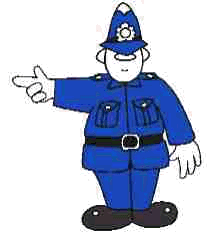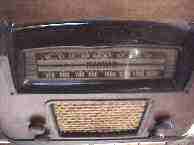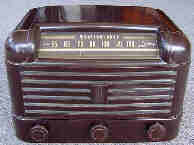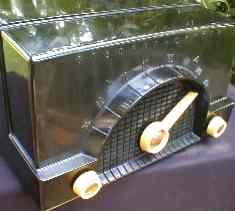Specially-made
"Police" Receivers and Converters
|
In the American
entrepreneurial spirit, a number of companies and
individuals got involved in some areas of the new
pasttime of listening to the police calls. Radio
directories, such as "Radio Craft," and "Callbook"
published radio frequencies and callsigns. Some police
departments even publicized their frequencies and codes,
knowing that the vast majority of listeners were law-abiding
and police supporters, and were potential "eyes and
ears" for the departments.
|
By 1938, many agencies had begun using two-way
radios in their patrol cars. The station transmitters
remained on the AM "medium wave" band, but the
cars' transmitters were on much higher frequencies, first
in the 33 megacycle range and soon in the 39 mcs band.
About 1939, the low-profile but high-production "Detrola
Radio and Television Corporation"
of Detroit MI introduced their popular...
|
"Detrola 207 VHF Converter"
Information
and photo courtesy of Henry Rogers, Western Historic Radio Museum

|
The Detrola 207 was an AC-powered radio, which could
receive from 25 to about 63 megacycles; its output would
then be tuned on an ordinary household radio in the 550
to 700 kcs range, in the lower portion of the standard AM
broadcast band. The user would first connect the attached
green wire to an antenna of some sort, and the blue and
black "twisted pair" to the AM radio...blue to
its antenna input, and black to the chassis or ground. To
receive the 25-63 kc frequency, the user was instructed
to "Set the broadcast receiver to any clear
frequency between 550 and 700kHz. Tune the 207 until a
station is heard. Tune the 207 for best signal then fine
tune the broadcast receiver for best signal."
(40 years
later, other types of converters became extremely
controversial - and then illegal - because they allowed
the user to tune in cellular phone calls on a regular
scanner.)
|
Check back here
soon. I'll be adding more information and photos of
receivers, scanners, etc...

Back to the L.A.P.D "KMA367"
Page
or, Email me if you like
|
| |
|
| |
|




